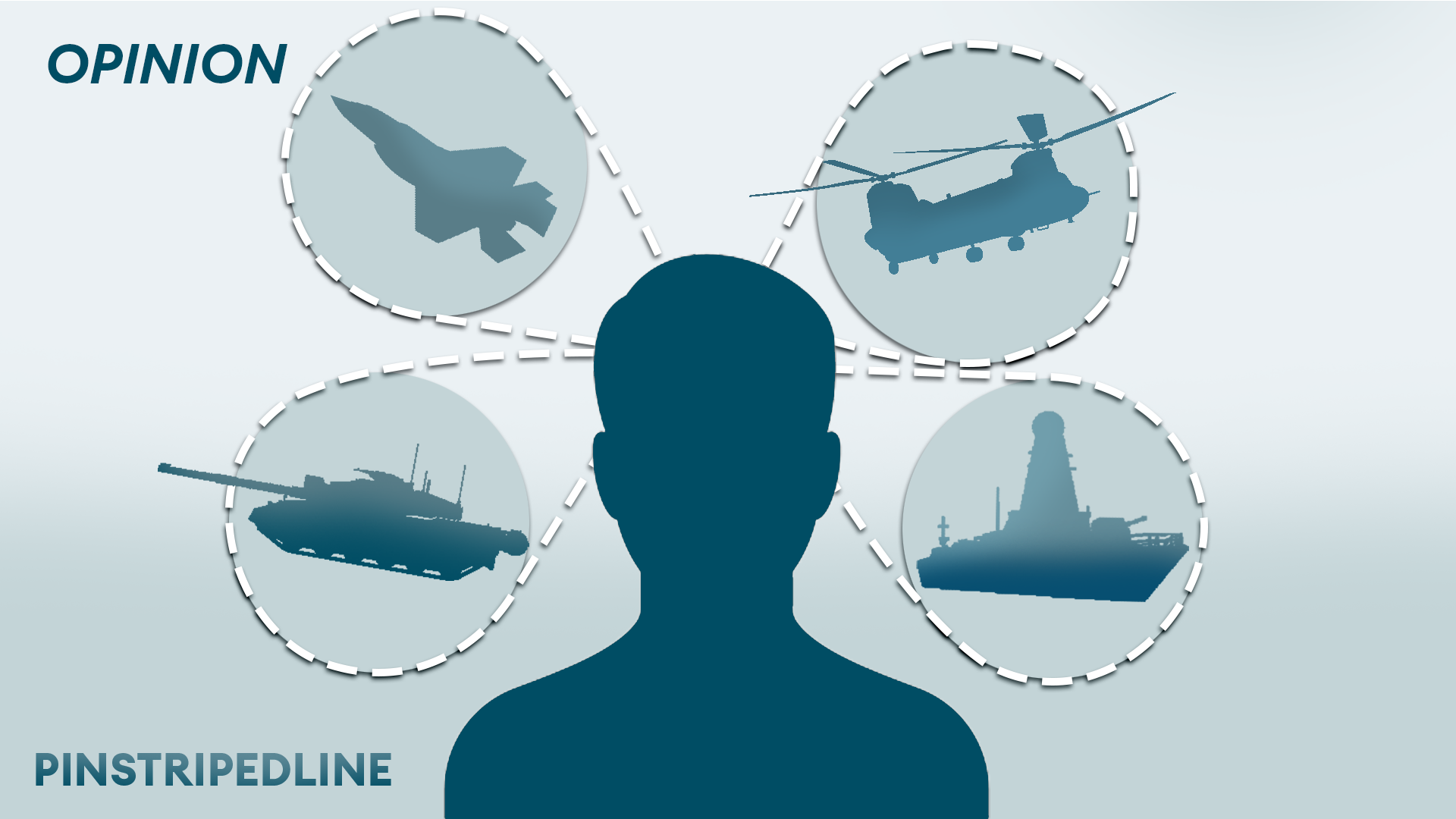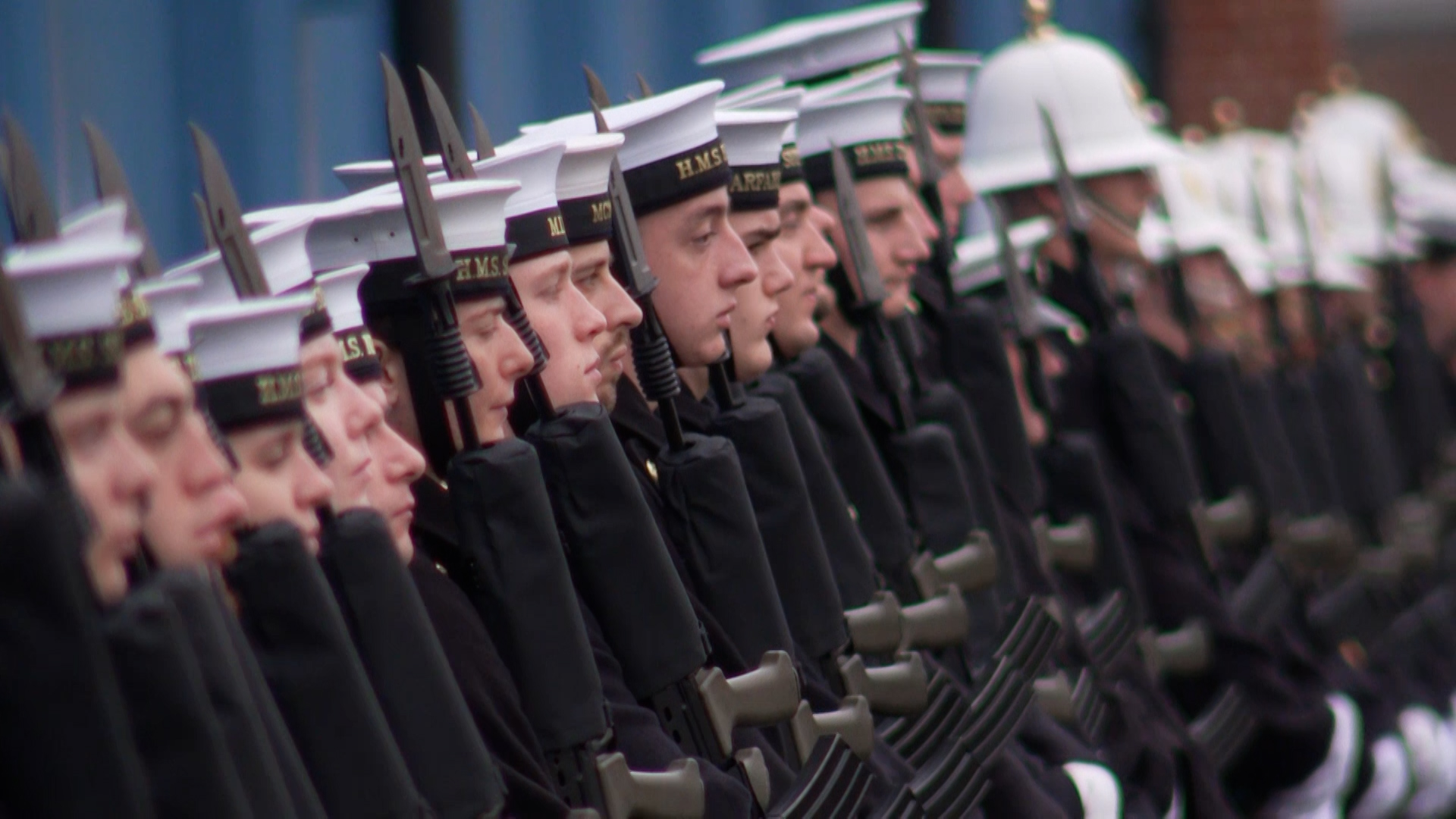
Navy decision to allow cultural mess kit prompts claims of wokery, but is it that bad?

The Royal Navy has announced that its members can wear a range of different clothing under their mess kit to better reflect their cultural heritage.
This change, which was delivered following consultation across the service, has become front page media news and been attacked as "wokery".
It's also drawn the ire of many former service members who believe that to dress in different uniforms is an attack on the very heart of the military ethos. But are things really that bad, or is this an overreaction to a very minor change?
In the Royal Navy, mess kit is a uniform worn by officers and senior ratings for smart social occasions, for example, mess dinners, cocktail parties and balls.
Comprising a jacket, white shirt, black bow tie and cummerbund, the wearer has the choice of trousers, skirt or kilts (but only if they have Cornish, Irish, Welsh, Scottish or Manx heritage) to reflect their cultural roots.
The cummerbund is usually heavily personalised, with people wearing unit or squadron cummerbunds and cufflinks that usually reflect a link to the wearer's past service.
In short, when the Royal Navy throws a formal dinner or a party, the chances of everyone attending in an identical uniform is close to zero.
The Navy also has a long history of absorbing wider cultural practices into its uniform arrangements.
For example, the cummerbund was originally a piece of clothing of Indo-Persian heritage, adopted by British forces into their own uniforms during the time of the Raj.
It is also worth noting that during the Second World War, the Women's Royal Indian Naval Service, then a part of the British Empire, introduced a sari as part of formal uniform for their female officers and, to this day, the sari forms part of the uniform for the Indian Navy.
What has changed is that the Royal Navy has now introduced a policy allowing people from different cultural backgrounds to wear clothing that better reflects their cultural heritage and background when wearing mess kit.
All change? Not quite
The uniform element (the jacket) will remain untouched. All that is happening is that a wider range of options are available for people to wear, in the same way as they would wear a kilt.
This policy was drawn up by volunteers from existing service networks in their spare time, at no cost to the taxpayer.
This has generated a strong response from online commentators who see it as an attack on the values of the Royal Navy, or an attempt to force diversity where they don't feel it is needed.
The counter view is that the Royal Navy is a uniformed fighting service, and that attempts to change the uniform represent an unacceptable risk to the service and its ethos.
The challenge with views like this is that they don't really reflect the service ethos, which is to make people feel "all of one ship's company", and that they belong to a body of women and men to serve as one team and potentially go to war and risk their lives for their colleagues.
Making people feel valued, included and integrated as a single team is a really good way to build those bonds.

Mixed race, mixed gender on the Victory
For the Royal Navy, reflecting people's heritage and roots is particularly important.
The service has a long history of recruiting globally, bringing people together to serve on a ship flying the British flag.
It is estimated that at the Battle of Trafalgar in 1805, there were sailors (male and at least three female nurses) from 22 different nationalities on board Nelson's flagship HMS Victory.
Today the Navy continues to recruit people from across the world, welcoming recruits from the UK and beyond to serve – for example, there are many sailors who hail from Caribbean nations, but proudly serve in the British Armed Forces.
As the UK's population demographics have changed, it's increasingly common to see service members drawn from different ethnic backgrounds, although the numbers are still small.
In 2022, roughly 5% of Royal Navy personnel (some 1,500 people) identified as coming from BAME backgrounds, a small but meaningful number.
Cultural values aligned
One of the challenges in being made to feel included in an organisation is believing that its cultural values, its standards and its norms are ones you align with and support.
Britain's Armed Forces have historically had a recruiting pool drawn mostly from white males, and their cultures, traditions and uniforms reflect this period.
The military is rightly incredibly proud of its history and tradition.
It can be daunting to try to fit in if you are being forced to don an identity whose organisational culture does not reflect your own – why stay working for an employer that expects you to risk your life for them, but which doesn't reflect, or respect any background other than that of white men?
This change will have practically no impact on operations. It doesn't change the fact that during the working day, on land, sea and air, the women and men of the Royal Navy will continue to wear identical uniforms to carry out their day job.
This is not changing. People will continue to wear the right uniform to do their job of keeping the nation safe.
All that has changed is that for one specific uniform, worn only for social occasions a handful of times per year at most, personnel now have a chance to wear clothes that respect their cultural heritage in the same way as their peers with Cornish, Irish, Welsh, Scottish or Manx heritage can wear tartan.
Changes like this matter because they go a small way to saying that people can serve, they can wear uniform and they can still retain their links to their prior life and culture in a small way, knowing that in turn the service reflects and respects this.
It sends a message that, no matter your background, you are welcome to be both part of a uniformed service and retain an element of your own identity within the Royal Navy.
Who leaves whom?
In turn, it is small gestures like this that help retain people, offering a sense of belonging, inclusion and respect. It is the little things that matter, that over time when added together build up to help people feel valued and respected, and ideally motivated to stay in.
All too often former service personnel say that they didn't leave the service, the service left them.
Given the significant shortfalls in meeting annual recruiting targets, the increase in people leaving earlier than planned leading to gaps that take years to fix, and the challenge in retaining people who feel that going outside offers better opportunities, any step to address recruitment and retention matters.
This is a very small step, but it's one that when added to other small steps, may just help swing the tide in favour of staying over going.
It costs practically nothing, has no impact on operations or national security and helps people feel valued and welcome. Why wouldn't you want to do something like this?
Is uniform really uniform?
The only constant about military uniform is that it is anything but uniform in appearance.
It has evolved over millennia, adapting to suit the needs of serving personnel as the threat and technology have changed.
The uniforms of a Roman soldier, a knight at the Battle of Hastings, a pikeman in the English Civil War, a rifleman at Waterloo or a soldier in the Second World War are all utterly different in appearance, function and style.
But were these people to meet, even if the clothing is different, all would share the same timeless bond of military humour, hard work and team spirit.
Some things are timeless. Military uniform is not.
@PinstripedLine is an esteemed defence and security blogger, providing expert insight and analysis.









